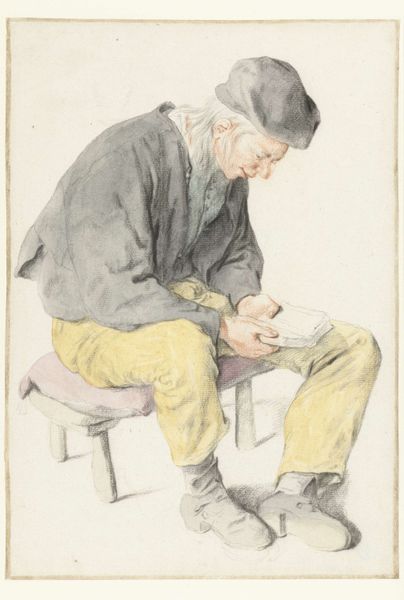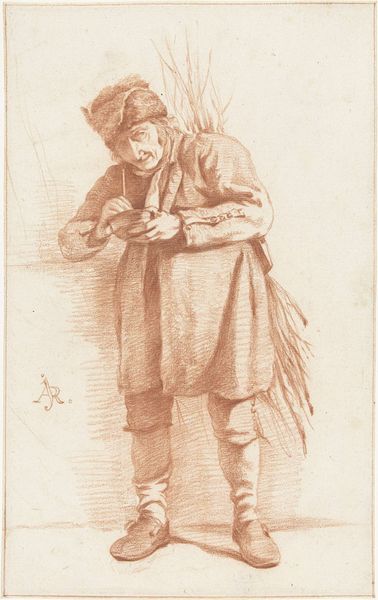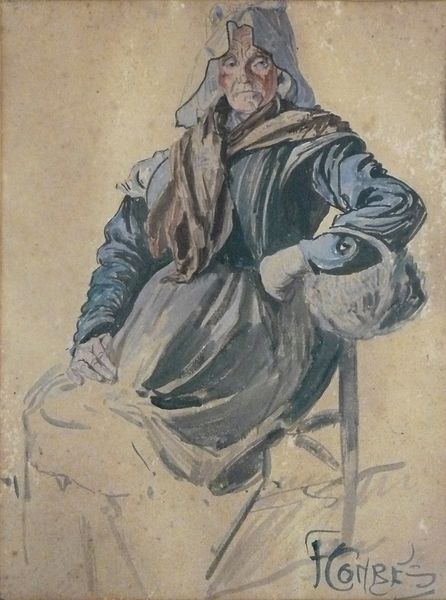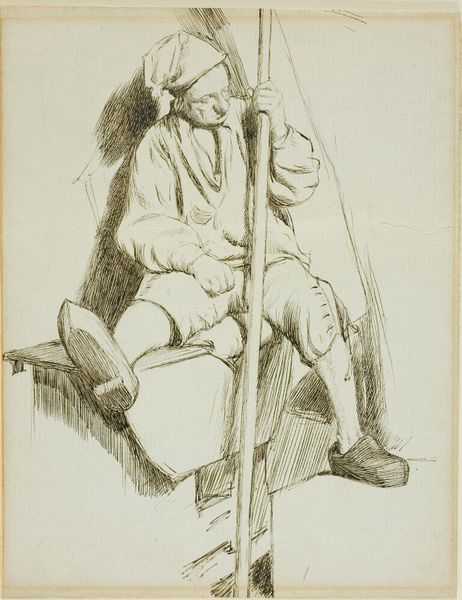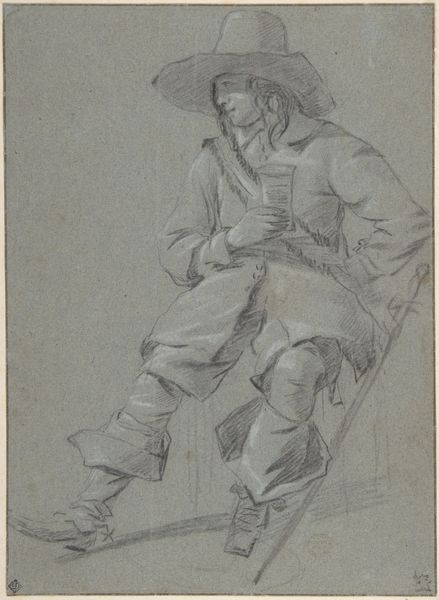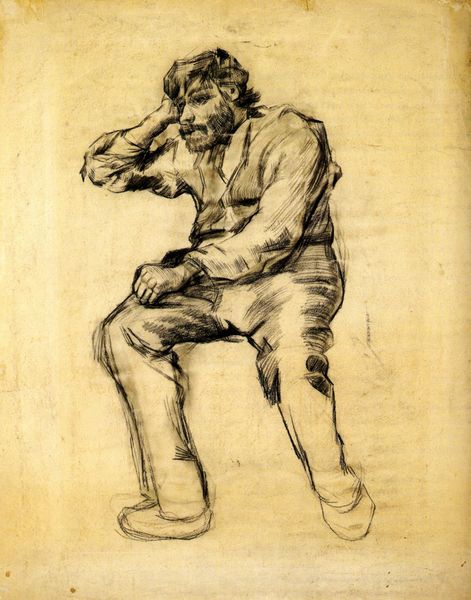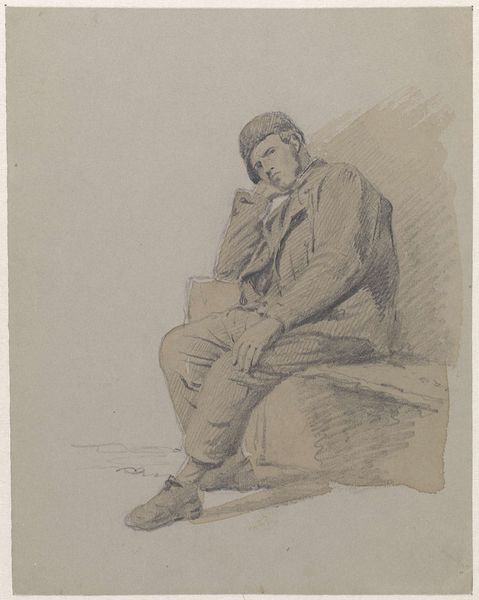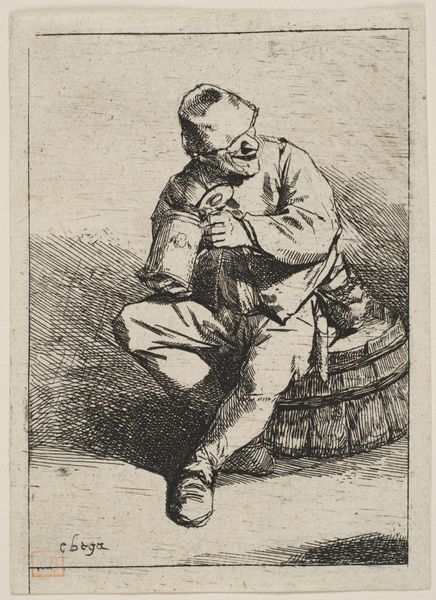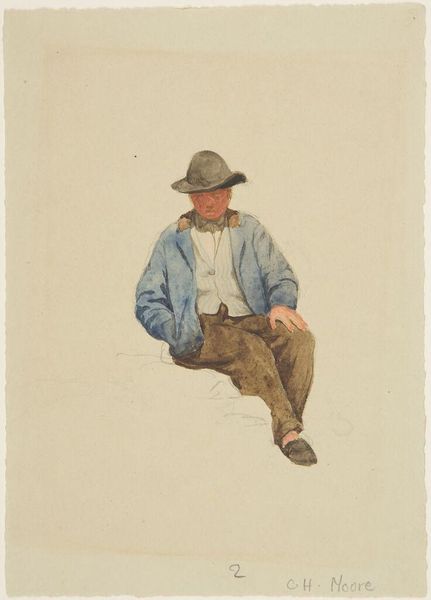
drawing, paper, watercolor, ink, pen
#
portrait
#
drawing
#
baroque
#
dutch-golden-age
#
caricature
#
figuration
#
paper
#
watercolor
#
ink
#
pencil drawing
#
pen
#
portrait drawing
#
watercolour illustration
#
genre-painting
#
realism
Dimensions: height 268 mm, width 187 mm
Copyright: Rijks Museum: Open Domain
Editor: This drawing, "Seated Man Reading, Facing Left," was created between 1690 and 1700 by Cornelis Dusart. It's a pen, ink, and watercolor work on paper. The figure seems really absorbed in his reading – what do you see in this piece? Curator: Well, I see Dusart engaging in a broader tradition of Dutch genre painting. It's fascinating how artists of this period are increasingly depicting everyday life, drawing attention to the individual within a burgeoning commercial society. How does the setting—the man, his clothes, and the book in his hands—influence your view of it? Editor: It feels quite intimate, but also like a social commentary of sorts. Is Dusart celebrating literacy or perhaps satirizing something about this man’s engagement with the written word? Curator: Exactly! Think about who would commission or buy such a work. The emerging middle class wanted images that reflected their values and sometimes poked fun at the lower classes, too. This caricature serves a public role, reflecting and reinforcing social hierarchies. Are the man's worn clothes sending a message to its intended audience? Editor: They certainly contrast with the leisure suggested by reading. So it's a picture about class, created for a specific social class? Curator: Precisely. Dusart’s art enters a dialogue – a visual negotiation – about status and identity in the Dutch Golden Age. It’s a product of its social and political climate. Editor: That's really changed how I see this, it’s much more than just a man reading. Curator: Indeed, it becomes a window into the values and the often unspoken power dynamics of its time. There’s a quiet revolution happening in those little genre scenes, isn’t there?
Comments
rijksmuseum about 2 years ago
⋮
This man, engrossed in his book, is almost a mirror image of the lad in yellow trousers. The style of drawing and the materials are strikingly similar, and the sheets are almost the same size. It is quite possible that the two drawings once formed a set. The – originally identical – gold framing lines around the drawings show that the works once belonged to the same collection.
Join the conversation
Join millions of artists and users on Artera today and experience the ultimate creative platform.

